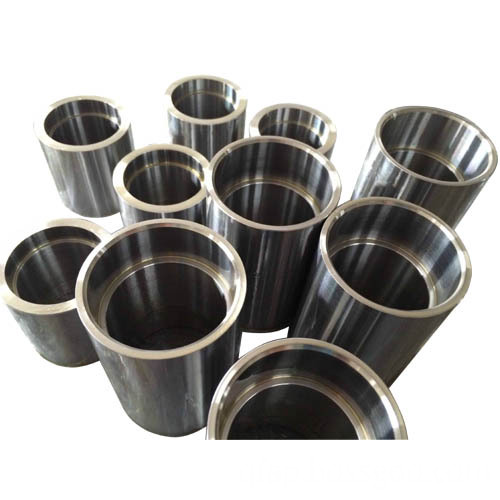Sound insulation doors are designed with a door leaf and frame, typically made from high-quality cold-rolled steel plates that are formed through cold processing. The door body is filled with sound-absorbing materials such as sound-absorbing cotton, polyurethane (PU), honeycomb structures, and specialized acoustic materials. These materials often include damping rubber plates and mineral wool acoustic boards. Advanced technology, unique design, and special sealing processes ensure excellent soundproofing, fire resistance, and safety performance. The doors are available in both wooden and steel versions, offering flexibility to meet the needs of different users.
Modern fireproof soundproof doors focus on hardware structure and material quality. The door surface and edges are commonly made from advanced aluminum-magnesium-titanium alloy, which is anodized for increased hardness, wear resistance, pressure resistance, and durability. This ensures long-term stability and aesthetic appeal.
The internal core of these doors now often uses aluminum honeycomb, a material also used in aircraft wings and spacecraft due to its strength and lightweight properties. While traditional bridge hole mechanics board was once widely used, it tends to deform over time. In contrast, aluminum honeycomb offers superior structural integrity and resistance to warping. Many domestic manufacturers still use less durable materials, but the use of aluminum honeycomb has become a more reliable and high-end choice.
The construction of fireproof soundproof doors is typically done through integral die casting, resulting in a seamless, tightly sealed, and highly soundproof structure. As for the facade materials, different manufacturers use various options, including metal panels, polymer organic boards, imported veneers, and even leather. These materials are eco-friendly and environmentally conscious. For example, aluminum metal veneer panels can be paired with substrates like density board, refractory board, or pure aluminum board. Density board substrates range from 3mm to 18mm in thickness, each suited for different applications such as wall decoration, sliding doors, or cabinet panels. Refractory boards are thinner at 1mm, while pure aluminum boards follow standard construction methods. The surface treatments of these panels include painting, embossing, and sanding, offering a wide range of design options for consumers.
Follow the WeChat public account "Jiuzhengmen Window Network" for more updates and business opportunities. Scan the code to access exclusive content and connect with industry leaders.
Shaft sleeves are applied in order to protect the shaft respectively the running surface of the shaft seal from damage or abrasive wear.
Shaft sleeves or tube fittings we made are mostly sold to North America, Europe, Japan, etc.

OD Dimensions from 1" to 16"
Precision: +/- 0.0005"
Material: carbon steel, grey iron, ductile iron, aluminum, stainless steel
Surface treatment: blackening, zinc plating, powder coating, painting, oiled, etc.
All of our cooperators are large bearing companies, mower companies or agricultural equipment companies.
Because of the long term cooperation, we could supply our customers not only the products but also our recommendation on the designs to saving costs.
To meet your demand, we are a manufacturer, also we are a designer.
Micro Shaft Sleeve,Bearing Shaft Sleeve,Tube Elbow Fitting,Stainless Steel Tube Fittings
SHAOXING QIFENG AUTO PARTS CO., LTD. , https://www.sxqfap.com